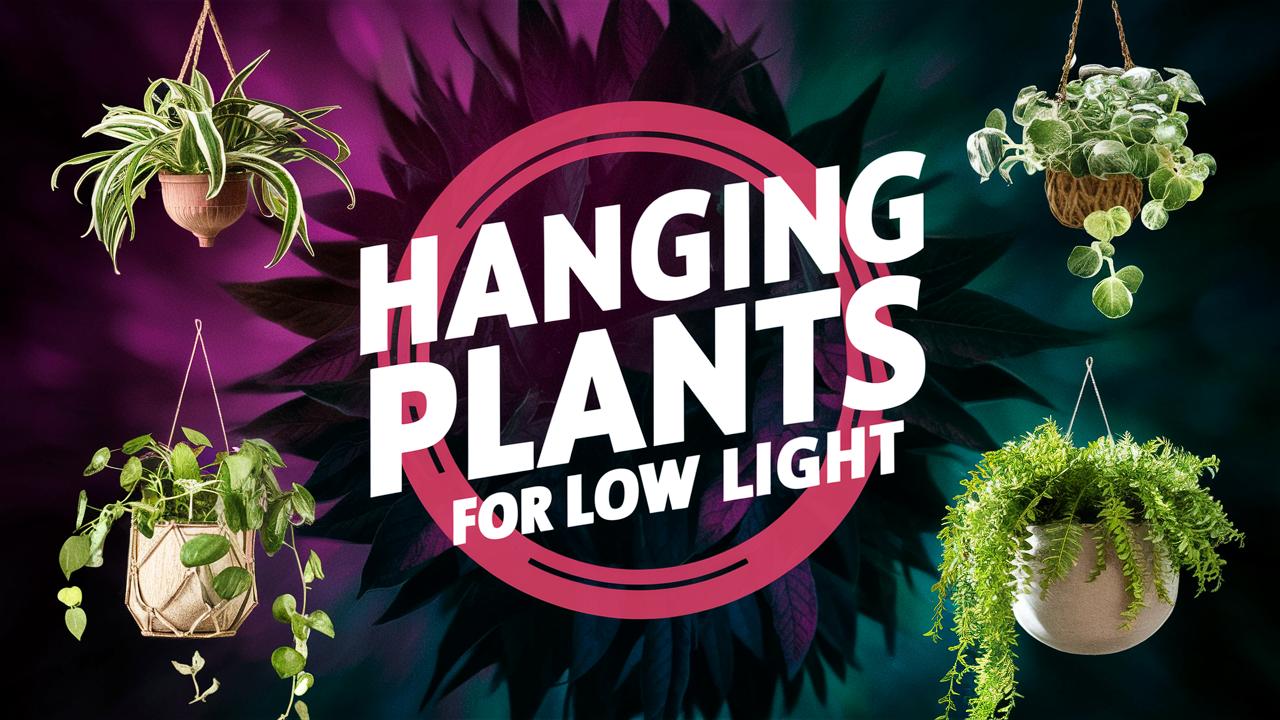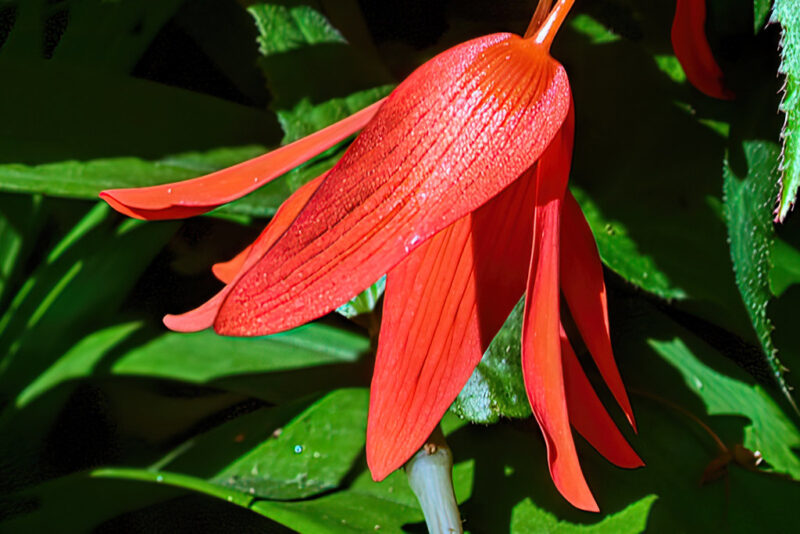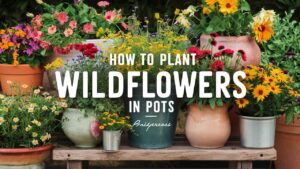In this guide, we’ll explore a variety of hanging plants that are not only resilient but also bring life and elegance to dimly lit areas.
Pothos (Epipremnum aureum)
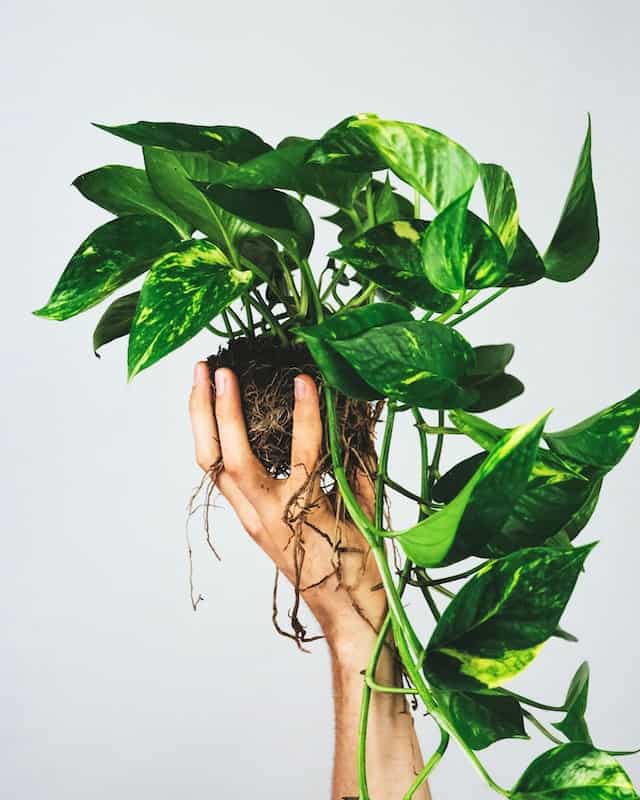
One of the most beloved choices for low-light conditions is the Pothos. With its heart-shaped leaves that can be variegated in shades of green and gold, this hardy plant is perfect for anyone looking to add greenery to their indoor environment without requiring a lot of effort. Pothos is renowned for its air-purifying qualities, making it a perfect companion for bedrooms or offices where clean air is a priority.
These plants can thrive in indirect light, and if you forget to water them here and there, they will forgive you—making them ideal for beginners and busy lifestyles. When hanging them, consider allowing their long, trailing vines to cascade gracefully, creating an eye-catching, luscious display.
Heartleaf Philodendron (Philodendron hederaceum)
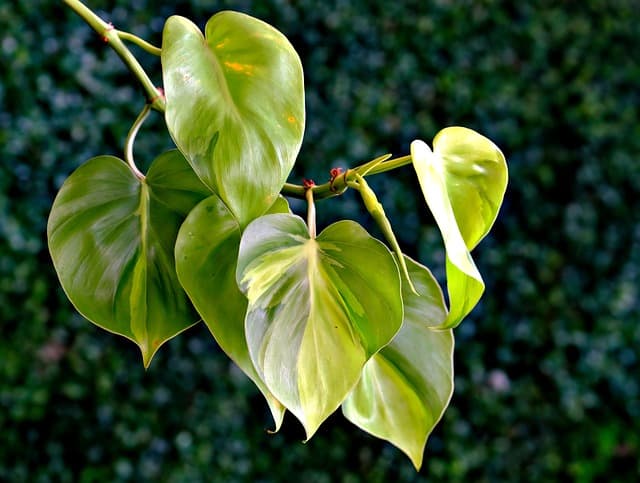
Another fantastic option for low-light environments is the Heartleaf Philodendron. This plant, featuring glossy, heart-shaped leaves, thrives in various lighting conditions, including shade. The Heartleaf Philodendron is extremely adaptable, which is why it’s a favorite among both novice and experienced plant enthusiasts.
When hung, its trailing nature becomes a captivating focal point, especially when the stems are allowed to extend towards the floor. This resilient plant not only adds aesthetic appeal but also helps maintain a healthy atmosphere in your home by filtering toxins from the air.
ZZ Plant (Zamioculcas zamiifolia)
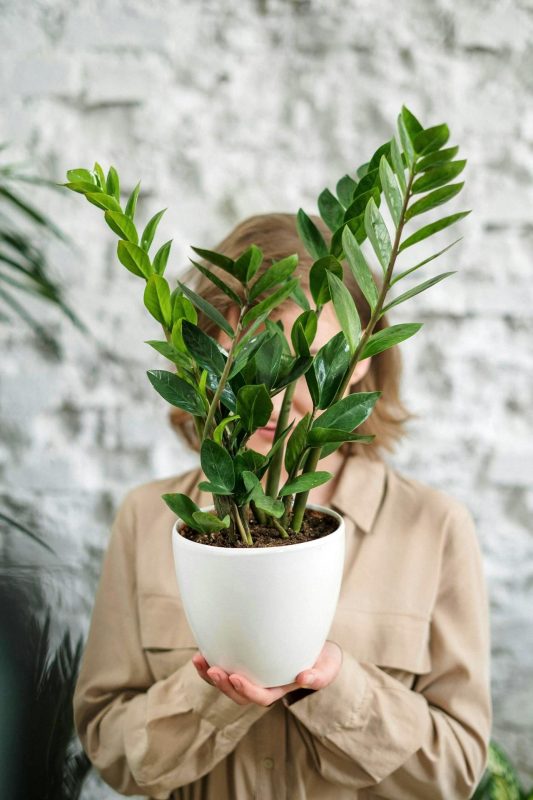
The ZZ Plant is the epitome of low-maintenance luxury, making it ideal for those with dim spaces. Its shiny, dark green leaves create a striking contrast against lighter backgrounds, easily catching the eye. The ZZ Plant is exceptionally drought-tolerant, thriving on neglect, so if you miss a watering, no worries—this plant can handle it.
While it may not trail in the traditional sense, when placed in a hanging planter, it can showcase its architectural elegance and provide a unique visual appeal that stands out beautifully in tight residential or office spaces.
Chinese Evergreen (Aglaonema)
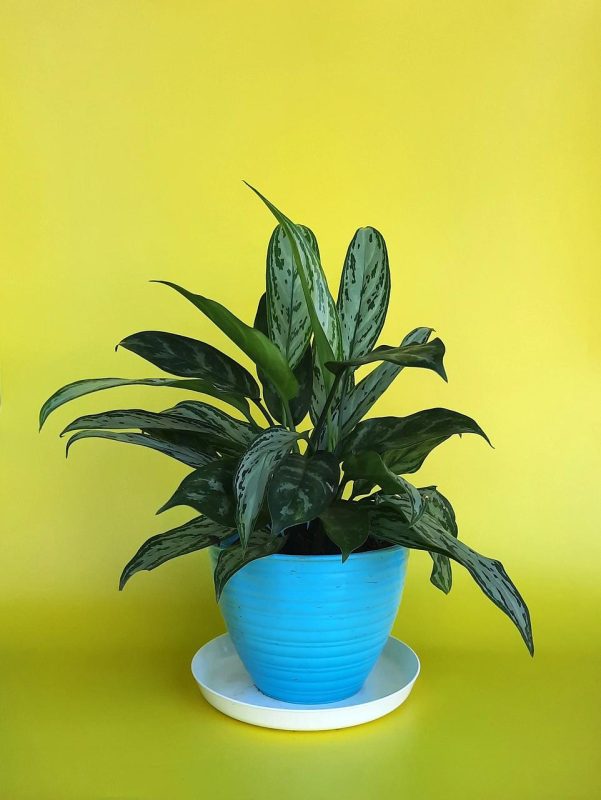
Chinese Evergreen plants are known for their adaptability and easy care. With variegated leaves that can display stunning patterns in shades of green, silver, and even red, they liven up spaces devoid of natural sunlight. The Chinese Evergreen is particularly forgiving when it comes to light and water conditions, making it a stylish and hassle-free addition to your home.
Hanging this plant allows its lush foliage to drape elegantly, creating a serene ambiance. Plus, it’s known to improve air quality, contributing positively to your living environment.
Spider Plant (Chlorophytum comosum)
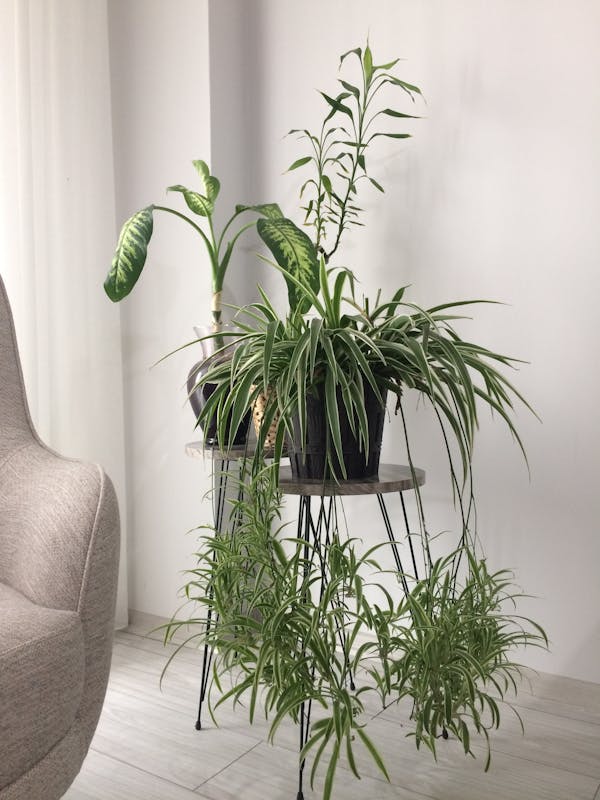
The Spider Plant is an intriguing choice to consider for your hanging plant collection. Characterized by its arching green and white striped leaves and small “pups” that dangle from the main plant, this species is not only visually appealing but also very forgiving. It adapts well to low-light situations, though it flourishes best with some indirect sunlight.
Hanging a Spider Plant provides a fun, whimsical touch as the little pups trail down, resembling tiny green spiders descending from their webs. This plant also excels at purifying the air, further enhancing its value in your indoor ecosystem.
Peperomia
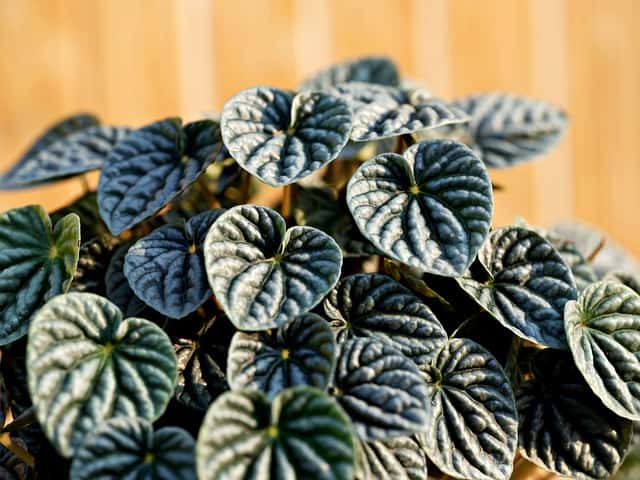
Peperonia, a diverse genus with many species, presents charming textures and colors perfect for hanging arrangements. Many varieties, like the Peperomia obtusifolia and Peperomia prostrata, thrive in low light and showcase striking foliage—ranging from smooth green to variegated varieties.
These compact plants have a compact growth habit and a unique charm that draws attention. When suspended in a hanging planter, their plump, attractive leaves create a captivating and vibrant display. With minimal water requirements, they make excellent housemates.
English Ivy (Hedera helix)
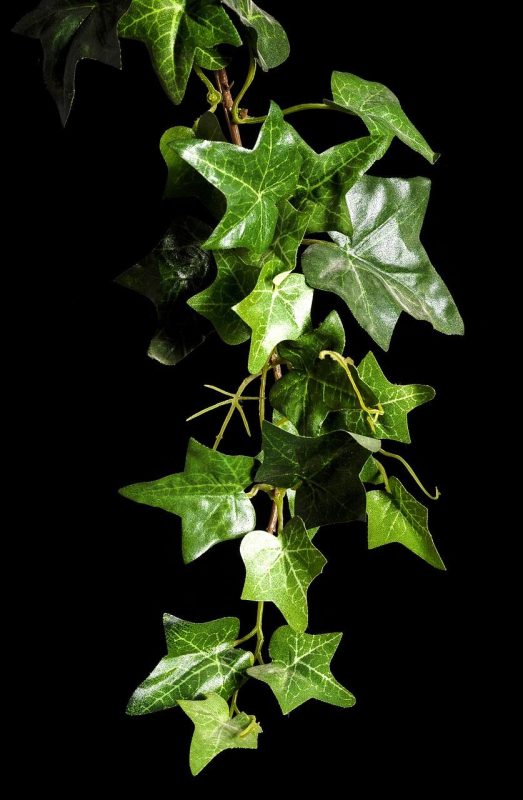
English Ivy is a classic trailing plant that suits low-light conditions beautifully. Its rich green leaves and variable growth habits allow it to adapt to different environments seamlessly. This hardy vine can flourish in a variety of light levels, as long as it receives some humidity.
A hanging English Ivy can create a lush curtain of green as its vine cascades down, perfect for adding a touch of nature to any space. Plus, it has air-purifying properties that make it a fantastic addition to bedrooms and common areas.
Cast Iron Plant (Aspidistra elatior)
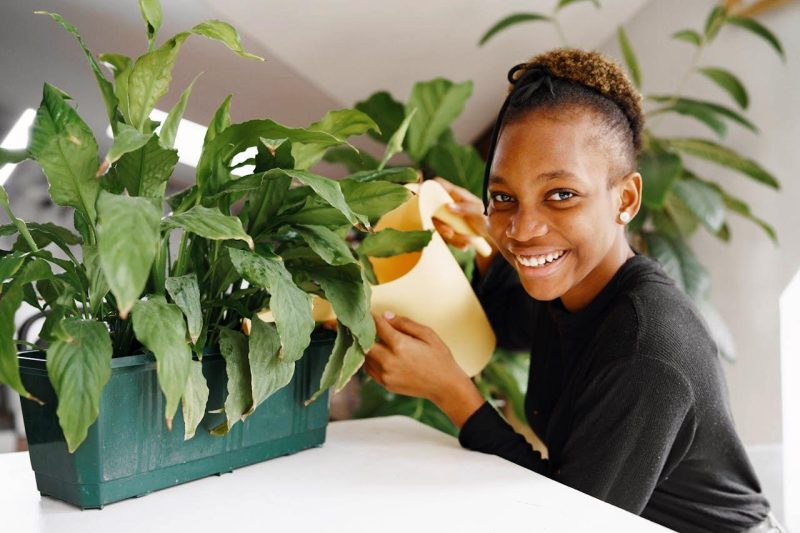
True to its name, the Cast Iron Plant is one of the most resilient plants available for indoor spaces. A perfect choice for low light, it offers dark green, strap-like leaves that are nearly indestructible. This plant can withstand neglect in terms of both water and light, making it ideal for beginners or busy individuals.
When hung in a planter, the Cast Iron Plant can provide a sophisticated foliage backdrop, perfect for accenting any room without the need for excessive care. Not only does it survive, but it also thrives, providing a lush greenery for your space.
Silver Queen (Aglaonema ‘Silver Queen’)
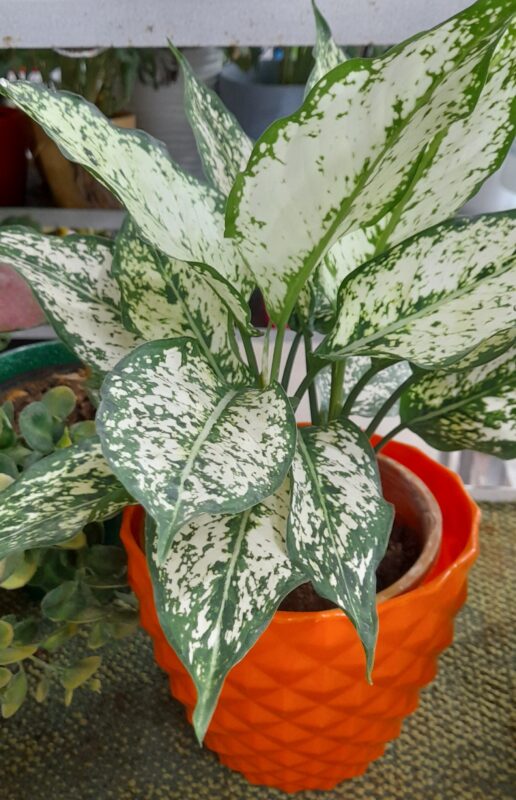
Silver Queen is a remarkable variety of the Chinese Evergreen, featuring striking silver-green leaves. Adapting well to low-light conditions, this plant boasts a beautiful mottled appearance, creating an elegant aesthetic in any room. Its tolerance to a wide range of humidity levels further adds to its appeal.
When hung, the Silver Queen can bring an air of sophistication and beauty to your indoor landscape. This effortlessly chic plant complements diverse design styles, from modern to traditional, adding a touch of nature to your decor.
Rattlesnake Plant (Calathea lancifolia)

The Rattlesnake Plant, with its unique and striking leaf pattern, is an excellent choice for those seeking a low-light hanging plant with personality. Named for the rattle-like markings on its leaves, this Calathea variety thrives in indirect light and appreciates higher humidity.
Hanging a Rattlesnake Plant can bring movement and interest to your space as its leaves tend to curl upward at night and unfurl when exposed to light. With its chunky, elegant leaves, it’s an eye-catching piece that adds a tropical vibe to your indoor setup.
Dumb Cane (Dieffenbachia)
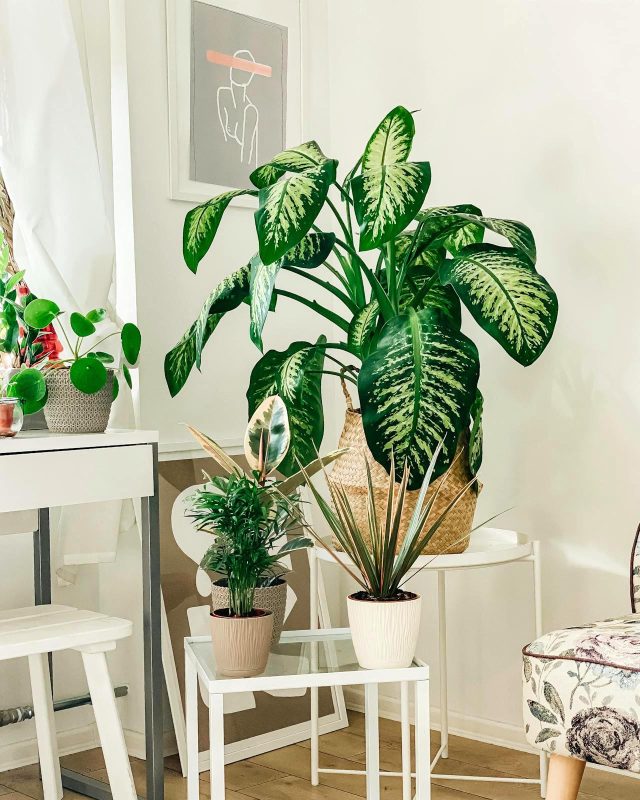
Dumb Cane is known for its large, lush foliage and striking patterns, making it a favored indoor plant. Even though it prefers medium to low light, it can survive in dimly lit spaces. Its broad, patterned leaves can grow quite large, providing a bold statement piece in your hanging garden.
When suspended from a hook or shelf, the Dumb Cane’s lush leaves can make quite an impact. However, take caution—it contains calcium oxalate, which can be irritating if ingested. With proper placement, this plant is a stunning choice to beautify your indoor garden.
Blue Star Fern (Phlebodium aureum)
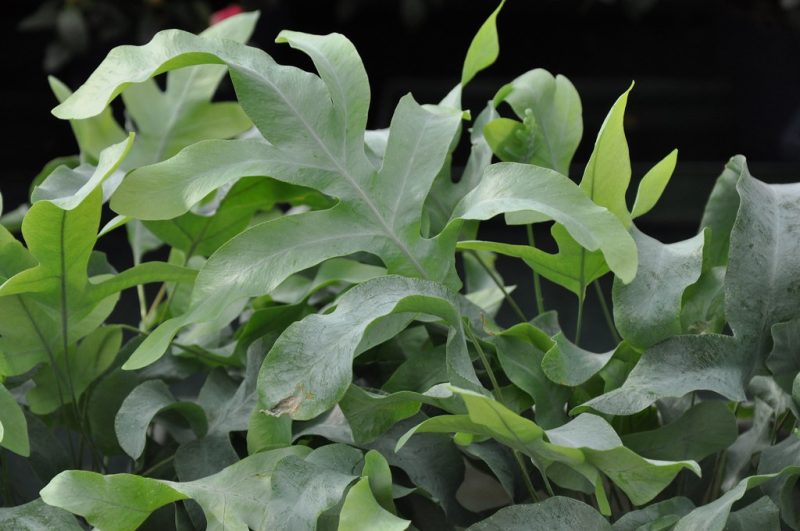
Ideal for low-light environments, the Blue Star Fern offers a unique twist among hanging plants. Its striking blue-gray fronds provide an exotic flair that sets it apart from more common choices. This fern thrives in humidity, making it suitable for bathrooms or kitchens with filtered light.
Hang the Blue Star Fern in an airy spot where its cascading leaves can create a whimsical feel. Not only does it have a captivating appearance, but it also contributes positively to indoor air quality, thus enriching your home’s atmosphere.
Monkey Leaf Plant (Epipremnum aureum ‘Marble Queen’)
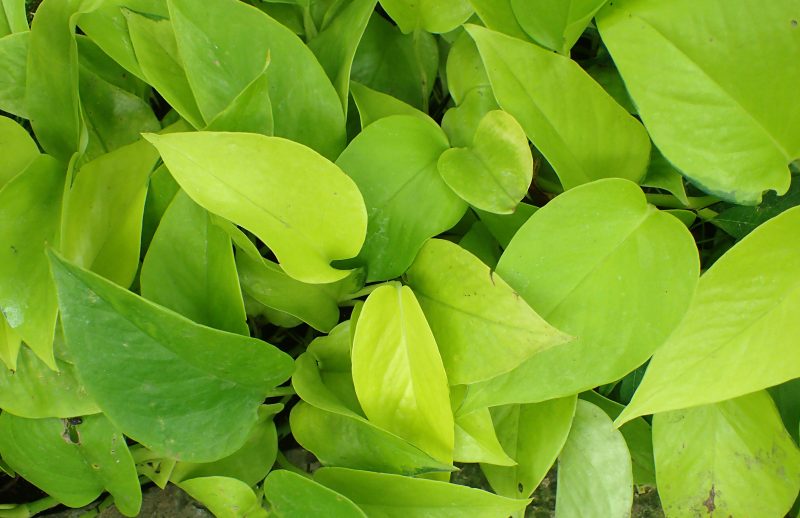
While often associated with the more standard Pothos, the Marble Queen variant deserves mention for its lovely variegation and resilience. With stunning marble-like leaves, it brings a bit of art to your indoor setup. This trailing plant enjoys indirect lighting and maintains its colors even in lower light environments.
The hanging Marble Queen creates beautiful drapery with its long vines, allowing the plant to shine as a centerpiece in your living space. Its adaptability makes it a perfect choice for busy plant lovers who appreciate character and style.
Creeping Fig (Ficus pumila)
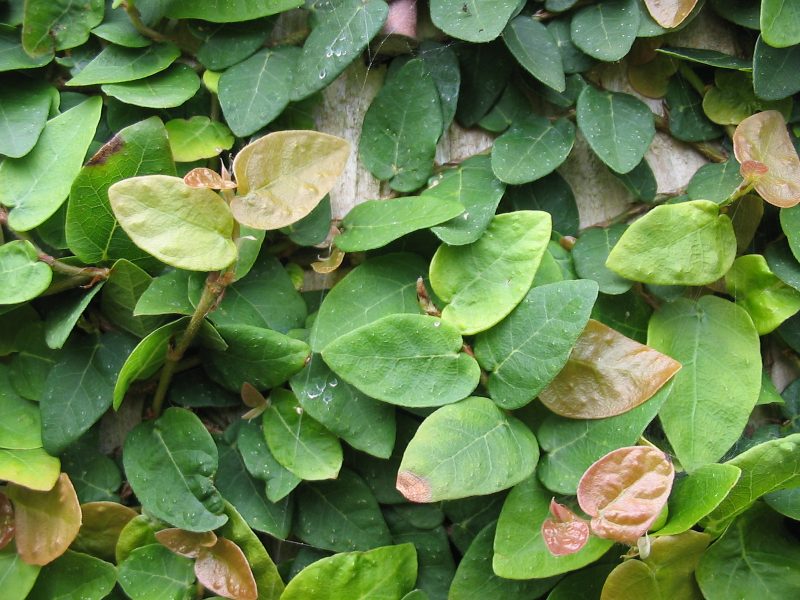
Creeping Fig is an excellent climber that can easily be trained to grow as a trailing plant in a hanging pot. Its small, heart-shaped leaves are densely packed on climbing stems, creating a lush backdrop in your low-light space. This plant will thrive in filtered light and high humidity, making it a remarkable choice for areas like bathrooms or patios.
When hung, the Creeping Fig can transform any vertical space into a green paradise. Its ability to take over walls, if desired, can create a tropical ambiance, making it a wonderfully adaptable addition to your indoor garden.
Maidenhair Fern (Adiantum)
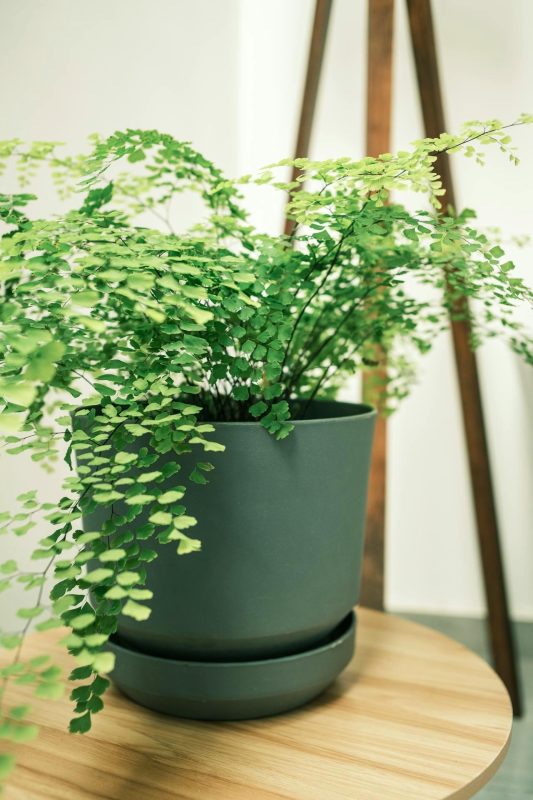
Known for its delicate fronds, the Maidenhair Fern is a true treasure for low-light areas. This fern loves humidity and indirect light, making it perfect for bathrooms or kitchens. The fine, lacy leaves create a soft, gentle presence that can soften harsher decor styles, balancing out your space beautifully.
Hanging a Maidenhair Fern allows its graceful foliage to cascade down gently. This fern requires more care than some other low-light plants, thriving on regular misting and moisture, but its aesthetic payoff is well worth the effort.
Bolivian Begonia (Begonia boliviensis)
The Bolivian Begonia is a unique trailing plant celebrated for its vibrant orange and red flowers, captivating anyone who crosses its path. Thriving in low light but blooming best in indirect sunlight, this plant not only adds color but can also brighten up dim spaces.
Hanging Bolivian Begonias allows their beautiful blossoms to dangle like little lanterns, creating a lively atmosphere in any room. They invite peace, positivity, and vibrant energy into the environment, making them a delightful choice for both beauty and resilience.
Marble Queen Pothos
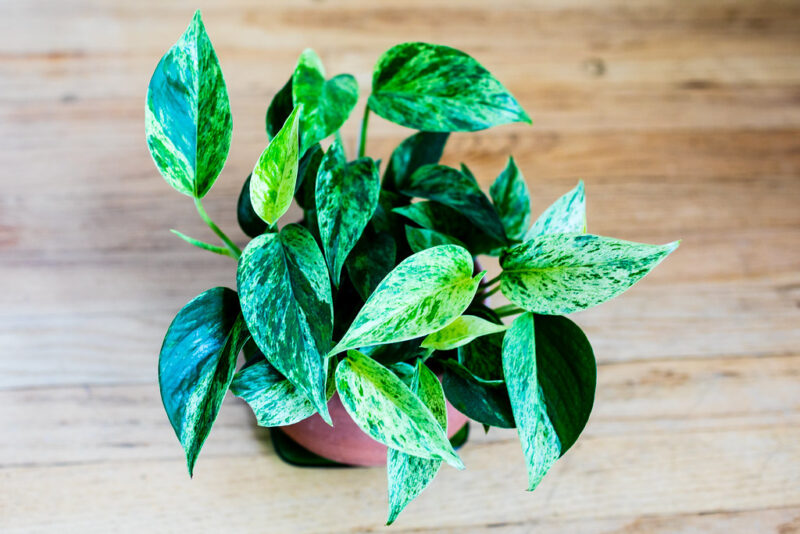
The Marble Queen variant of Pothos features a delightful white and green variegation that makes it a visual treat. Like its counterpart, it thrives in low light, relishing in the shaded corners of your home. This plant is appreciated not only for its beauty but also for its iconic trailing nature.
Suspending a Marble Queen allows its lovely leaves to luxuriate in the air while creating an ethereal presence in your home. It’s a perfect blend of low maintenance and stunning aesthetics, making it a hit among plant lovers.
Ponytail Palm (Beaucarnea recurvata)
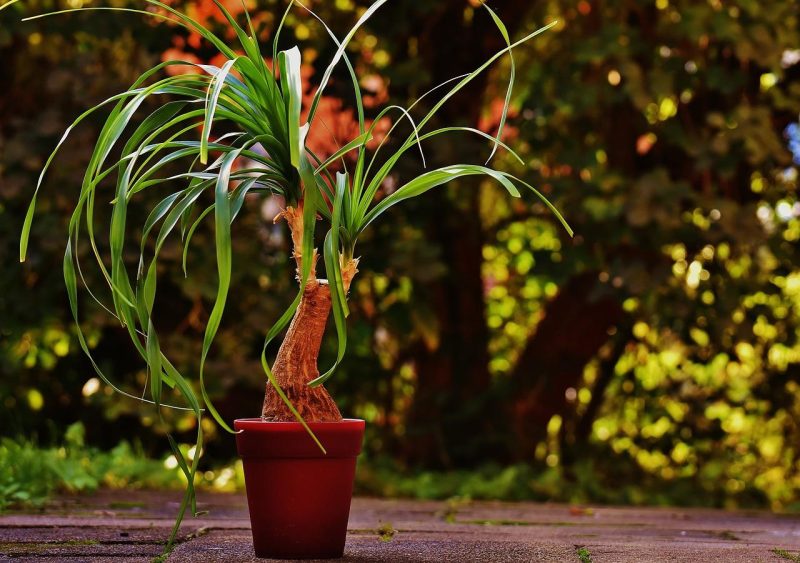
Ponytail Palm isn’t your typical hanging plant, but with some creativity, it can shine in this realm! With its unique bulbous base and long, cascading leaves, this plant offers an intriguing aesthetic and thrives in low to medium light conditions.
Hanging this plant provides an unexpected twist to your decor while emphasizing its unique form. The Ponytail Palm stands out beautifully as it cascades down from its planter, offering a quirky but charming visual element to your indoor landscape.
Silver Pothos (Scindapsus pictus)
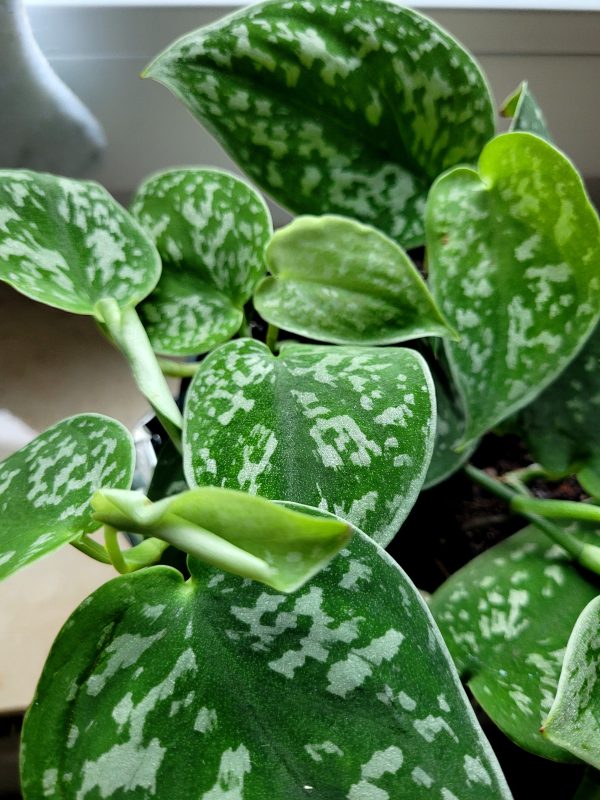
Silver Pothos brings a touch of elegance with its silvery leaves that can host a mix of green, gray, and white shades. Thriving in low-light conditions, this plant is as hardy as its Pothos relatives, making it easy to cultivate.
When hung, the trails of Silver Pothos can create an enchanting display, reflecting the light beautifully as it shimmers. Not only aesthetically fulfilling, but the Silver Pothos is also a great air purifier, making it a double win for your home.
Wax Begonia (Begonia semperflorens)
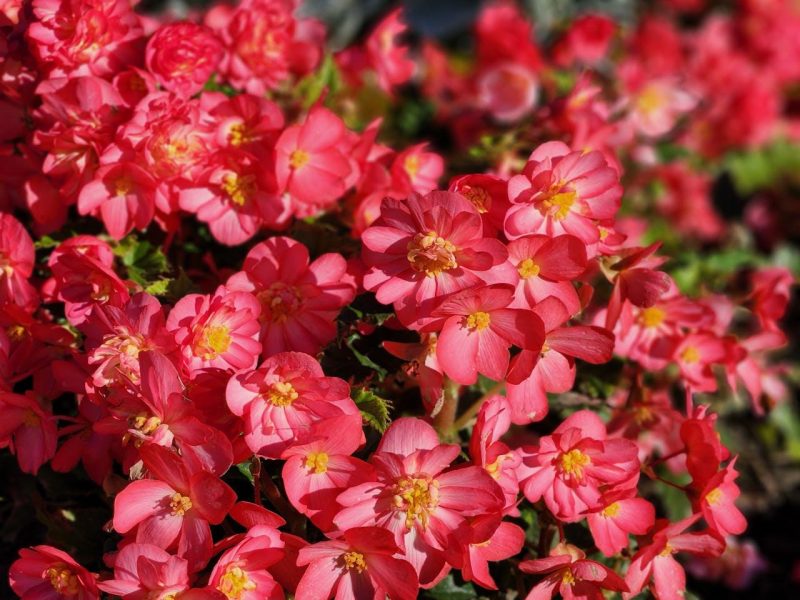
The Wax Begonia is a vibrant option with glossy leaves and colorful blooms that thrive in indirect light. Though they may not be traditional hanging plants, they can adapt beautifully in hanging baskets or planters, allowing for a unique aesthetic where their flowers and foliage can spill over the edge.
These plants are great for adding pops of color to otherwise dull spaces while requiring minimal care. Their forgiving nature makes them perfect companions for both novices and seasoned gardeners.
Donkey’s Tail (Sedum morganianum)

Ideal for a more succulent approach, Donkey’s Tail boasts thick, trailing stems adorned with fleshy, bead-like leaves. This plant prefers bright but indirect light, thriving mainly with minimal water. Perfect for low light settings, it can adapt as long as it isn’t exposed to excessive moisture.
When hung, its long tendrils can create an exceptional visual as they cascade down elegantly. Donkey’s Tail is a great way to enjoy a unique succulent while enhancing the decor with its charming, unusual growth habit.
Algerian Ivy (Hedera canariensis)
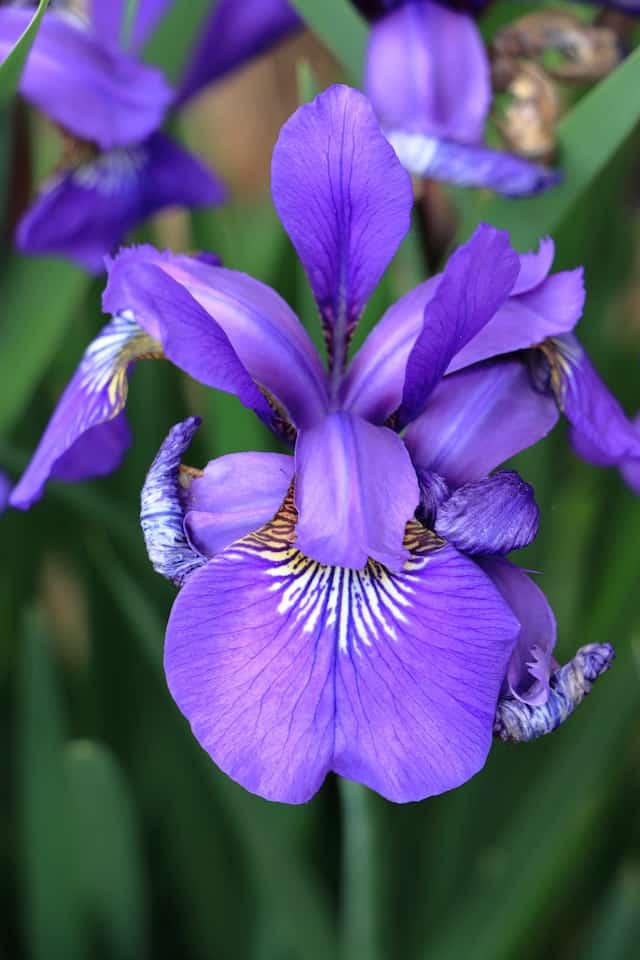
Algerian Ivy offers a touch of classic beauty with its evergreen foliage and ability to thrive in low-light conditions. Similar to English Ivy, it prefers some humidity and stays lush under proper care.
Hanging this ivy allows it to create a charming vertical garden display. It adds a touch of elegance when its vines gracefully drape down, enhancing the verdant feeling in any area of your home.
Peacock Plant (Calathea Makoyana)
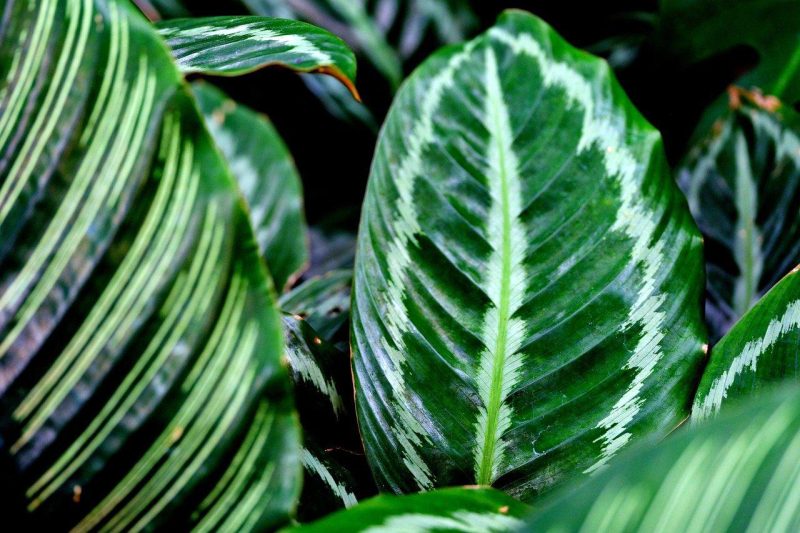
The Peacock Plant showcases stunning leaf patterns, resembling the feather of a peacock, making it a visually striking choice among hanging plants. While it enjoys low to moderate light and humidity, care involves keeping its soil consistently moist without overwatering.
The cascading nature of the Peacock Plant allows it to thrive splendidly when hung, bringing an exotic flair to your space. This plant serves as a reminder of nature’s beauty and intricacy, all while enhancing your indoor jungle.
Peace Lily (Spathiphyllum)
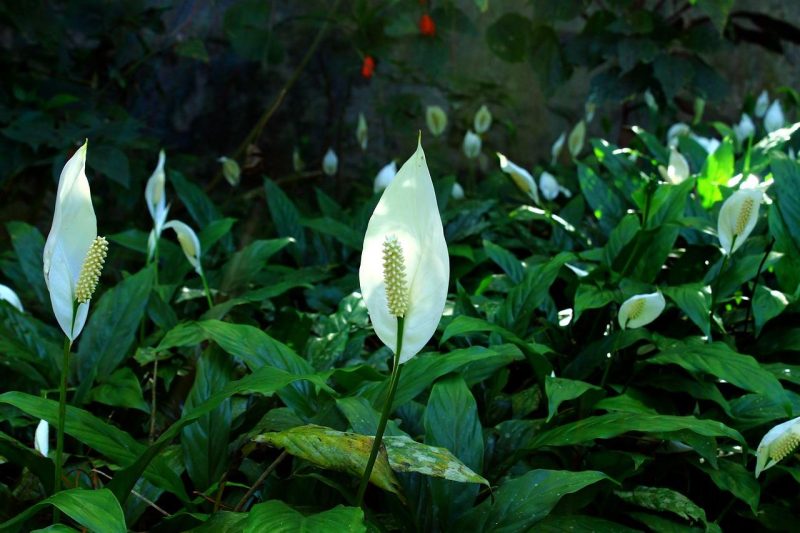
Peace Lilies are not only beautiful with their glossy, dark leaves and elegant white blooms, but they also excel in low-light conditions. These plants are famous for their air-purifying capabilities, making them ideal for bedrooms or offices.
Hanging a Peace Lily allows its lovely blooms to hover gracefully in the air, bringing life and energy to your surroundings. This low-light-loving plant brings harmony and tranquility to your indoor atmosphere.
Pinstripe Calathea (Calathea ornata)
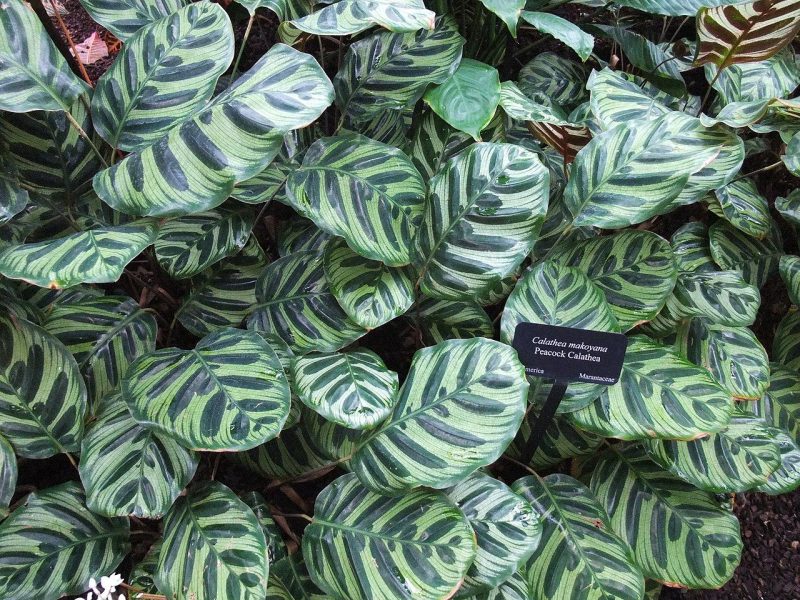
With its striking pinstriped leaves, the Pinstripe Calathea is a bold statement piece perfect for dimly lit areas. Like other Calathea varieties, it loves humidity and indirect light, creating an enticing atmosphere with its vibrant colors.
When hung, this plant will bring a delightful sense of movement into the space as its leaves subtly rise and lower in response to the light. Its unique patterns and colors create an intriguing visual texture, attracting the admiration of guests and passersby alike.
Furry Feather (Asparagus densiflorus)

Furry Feather, or Asparagus Fern, is an eye-catching choice with its soft, feathery fronds. Thriving in a range of environments, it can adapt well to low light, though it does appreciate some humidity.
Hanging a Furry Feather can create an enchanting display of soft foliage that adds character to your indoor garden. The cascading nature of this plant promotes an airy, light feel, beautifully complementing other hanging specimens.
Boston Fern (Nephrolepis exaltata ‘Bostoniensis’)
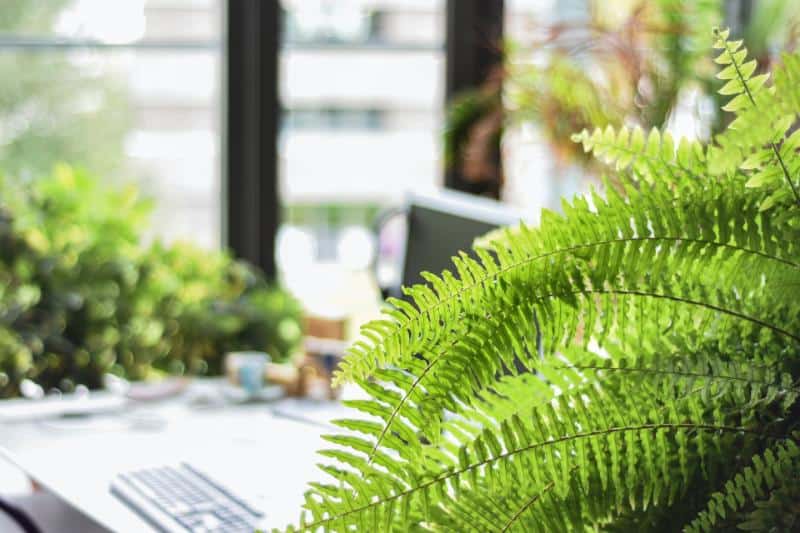
Boston Ferns are well-known for their beautiful fronds and preference for moist, humid environments. While they thrive in indirect light, they can also adapt to lower light levels with some care.
Hanging Boston Ferns can create a luscious, full look as their graceful fronds spill over the edges. This plant’s dramatic presence enhances any decor style, bringing a touch of softness and serenity to your home.
Asparagus Fern (Asparagus aethiopicus)

Often confused with its cousin, the Furry Feather, the Asparagus Fern has a unique bushy appearance that softens any space. It is also an excellent low-light option, adapting to various conditions with ease.
Suspending an Asparagus Fern not only offers visual texture but can also create cozy corners in your home. Its bushy characteristics can evoke a sense of fullness and life, enhancing the beauty of your living area.
Bird’s Nest Fern (Asplenium nidus)
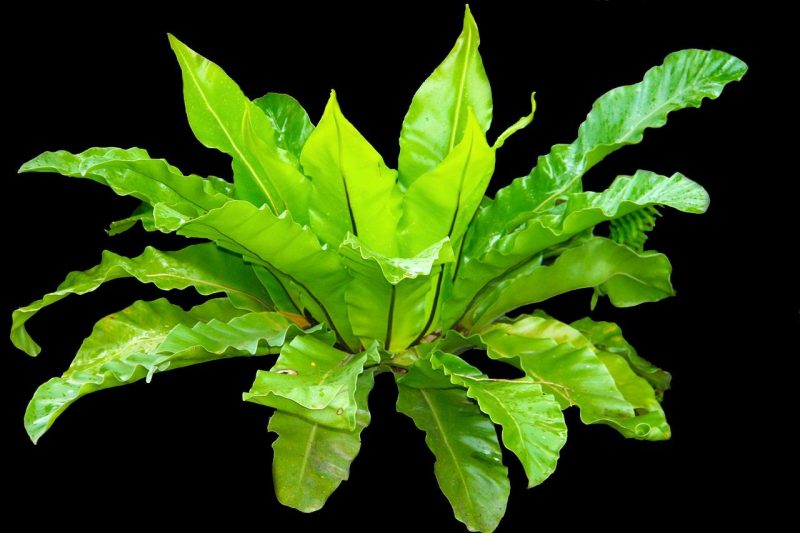
The Bird’s Nest Fern is a popular choice for its unique rosette shape and glossy leaves. Thriving in low light and high humidity, this fern’s warm and inviting look adds a soothing presence to your indoor garden.
Hanging a Bird’s Nest Fern allows its graceful, curling leaves to frame spaces beautifully. This plant offers a natural elegance that compliments modern and traditional decor alike.
Rex Begonia (Begonia rex)

For lovers of color and texture, Rex Begonias bring stunning leaves with intricate patterns and hues. While they prefer bright indirect light, they can adapt to lower light levels if watered appropriately.
When hung, Rex Begonias provide a splash of color and visual interest while their leaves create a graceful visual flow. Their unique foliage will undoubtedly attract attention, making for a fabulous conversation starter.
Nerve Plant (Fittonia albivenis)
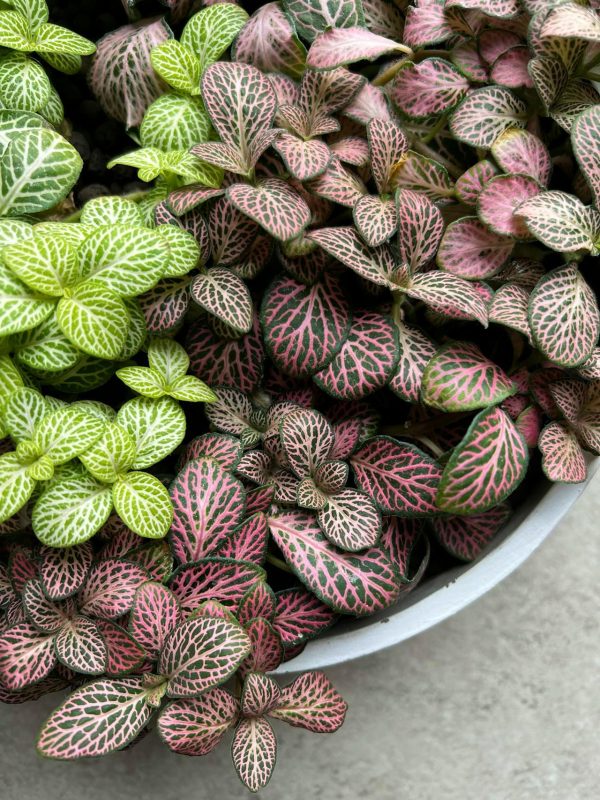
The Nerve Plant is known for its vibrant veins running through its leaves, creating a stunning contrast. While it prefers humidity and can tolerate low light, it thrives when kept moist, making it a perfect fit for hanging baskets.
Hanging a Nerve Plant provides a captivating visual element, especially with its striking pattern and color. It offers a pop of vibrancy to your interior, making it a great choice for brightening dim spaces.
Wax Plant (Hoya carnosa)
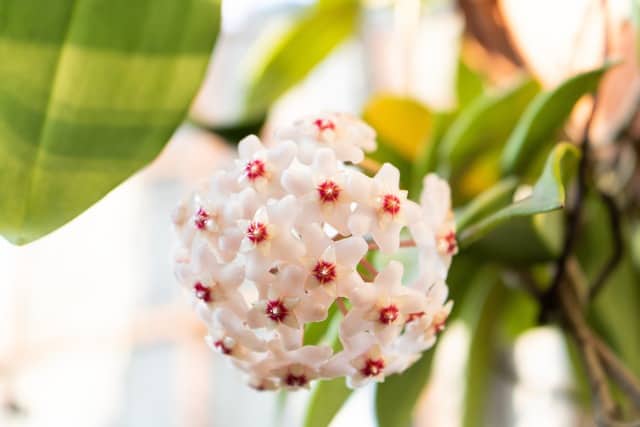
The Wax Plant, or Hoya, is cherished for its thick, waxy leaves and clusters of star-shaped flowers. While it thrives in bright light, it can adapt to lower light conditions with proper care.
Suspending a Wax Plant creates an ethereal aesthetic as its trailing vines cascade elegantly. The fragrant flowers can add an extra layer of appeal to your indoor garden, making this plant a memorable addition.
Prayer Plant (Maranta leuconeura)
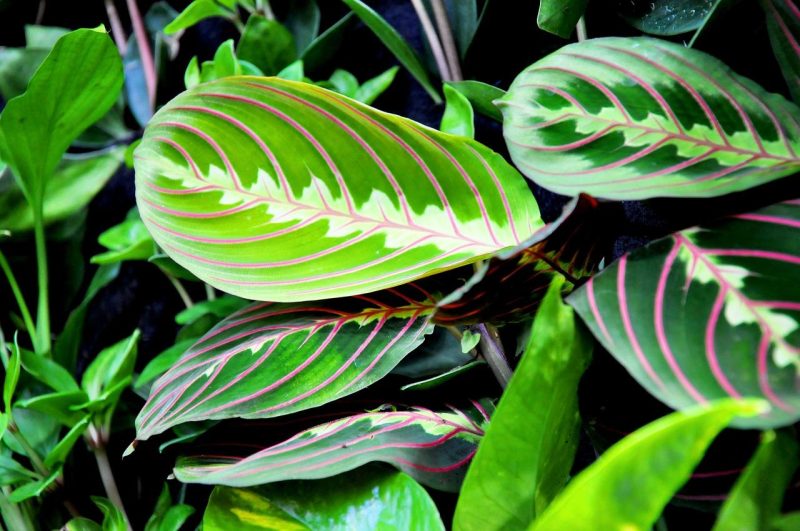
The Prayer Plant, with its beautifully patterned leaves, is a statement in low-light hanging arrangements. Known for its unique habit of folding its leaves upward at night, this plant stands out in both style and behavior.
When hung, the Prayer Plant can create a playful, dynamic display as its leaves shift throughout the day. Its adaptability and beauty make it a beloved choice for those seeking to introduce low-light plants that delight and inspire.


